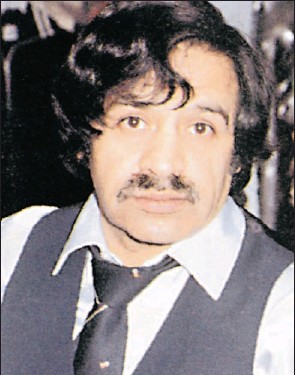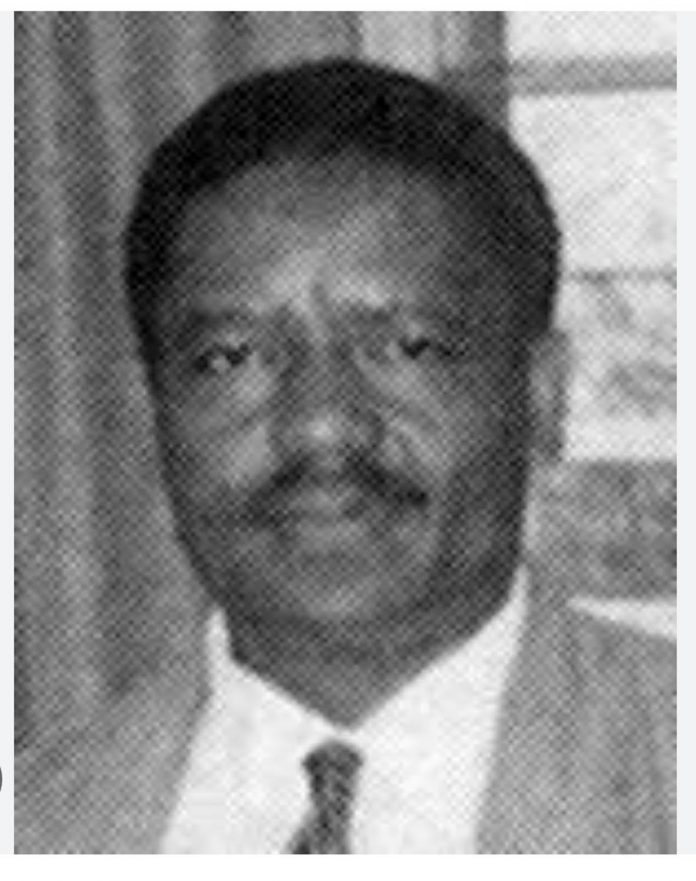Legendary South African Football Administrator Abdul Bhamjee dies



When the story of the founding of the Congress Youth League (CYL) — the forerunner of the ANC Youth League — is told, usually it is only Anton Lembede, AP Mda and a few others who are mentioned. The several other founding members are seldom brought up and the omission of their names is a silencing of their intellectual prowess and political contribution to the making of the CYL.
In KwaZulu-Natal, church members start the journey to the top of the holy Mountain Nhlangakazi. 100,000 pilgrims make a three day barefoot walk from the headquarters of the Nazareth Baptist Church, or Shembe. Shembe is staunchly a traditionalist Zulu cult that was founded in 1913 by Isaiah Shembe after a vision. Their beliefs are a mix of Old and New Testament and the ancestral veneration of traditional Zulu culture. The Nazareth Baptist Church (Church of Shembe) has Millions of members, but the group is still a mystery to many in KwaZulu-Natal. Isaiah Shembe, was born in 1867 among the Sotho people of the Free State Province of South Africa, to a Zulu polygamous father Mayekisa, and Sitheya Mlindi. 'Makeyisa' was a landless Farm dweller in Harrismith. As legend has it, when Isaiah Shembe 's mother was already pregnant, a voice said to her, 'You will bear a son who will be a special messenger'. Mayekisa did not grasp the full significance of the words because she was not a religious person. After Shembe's birth, his uncle Nhliziyo, gave him the name Shembe and his father named him Mudliwamafa meaning 'my inheritor'. Shembe styled himself as a biblical character and at his baptism in 1906 he changed his name from Mudliwamafa to Isaiah. Shembe died on 2 May 1935 after standing for three hours in cold water in a river administering adult baptism. Shembe never went to a formal school. He only learnt to partially read and write later in life. Although Shembe had little 'mission education' he was able to cite biblical verses, from memory, outwitting most European Missionaries. Whatever Shembe 'read' was supposedly not through learning, but came to him miraculously. If you have come across a circle of white painted stones around a tree and wondered how they got there, it is likely that you have come across a Shembe temple. The stones are used to mark the sacred places where they pray. Every October, more than 30 000 followers gather in the Village of Judea near Eshowe to celebrate the Shembe Festival. They sing, dance and pray. Another big gathering for the Shembe happens every January in ekuPhakameni - the original settlement of Shembe’s Community. The Shembe bought the Site in 1914.
EkuPhakameni is also home of the Shembe Temple, that was built in 1918. July is another special month for the Shembe. They return to Nhlangakazi for one of their most popular festivals of the Year. Thousands of members from all over South Africa attend. Scores of people also gather on the last Sunday of the month to witness the sacred dancing. The Inanda Heritage Route tour stops at several Shembe sites, including EkuPhakameni. Visitors can get a glimpse of the Shembe’s holy place, while learning more about the Church’s History. The tour makes a stop at the Ebuhleni Village, where visitors can have a look at some of the Shembe Church rituals. The Shembe Settlements have become popular destinations for visitors who love learning about History and Culture.
https://www.drivesouthafrica.com/blog/exploring-durbans-inanda-heritage-route/
https://people.ucalgary.ca/~nurelweb/BOOKS/shembe/sos/sos-1.html
https://eshowe.com/event/shembe-gathering-judea/
https://mg.co.za/article/1999-08-06-shembe-the-incredible-whiteness-of-being/
https://mg.co.za/article/2015-04-02-holy-hair-the-long-and-short-of-it/
Nelson Mandela Metropolitan University (NMMU) opened on 1 January 2005, the result of the merging of the PE Technikon the University of Port Elizabeth (UPE) and the Port Elizabeth campus of Vista University (Vista PE). The PE Technikon has its roots in the Country’s Oldest Art School, this PE Art School was founded in 1882. The institution later became the College for Advanced Technical Education (CATE), was initially situated in Russell Road, Central. The College moved to Summerstrand, in 1974 and became the PE Technikon in 1979. The Teachers’ Training College in Summerstrand was taken over by the Technikon in 1994, becoming known as the College Campus, and the Algoa College of Education became part of the PE Technikon in 2001.
Situated in Struandale, approximately 25 km away from the Main Campus, this became known as the Algoa Campus. The Port Elizabeth Technikon expanded to the Southern Cape in 1985, when it took over the College for Foresters, Saasveld from the Department of Forestry. The George Campus expanded in 2001 with the purchase of the; Hurteria Building in the Centre of the Town. At the time of the merger, PE Technikon had more than 10 000 students. The Institution’s last Chancellor was former Speaker of Parliament Dr Frene Ginwala, the last Vice-Chancellor Prof Hennie Snyman, and the last Chair of the Council was Mr Clive Stanton.
The University of Port Elizabeth (UPE), the Country’s first Dual-Medium, Residential University, came into being on 31 January 1964. This was after Parliament adopted Act 1 of 1964, as Law. The first Academic Year commenced on 1 March 1965. Initially situated in a series of Buildings in Bird Street, in the Historic Central District. UPE moved to a modern, purpose-built Campus which incorporated Residences, Sports Complex and the towering Main Building. The Campus was officially opened in August 1975 and the final move from Bird Street came in 1979, with the opening of the science blocks at the Suburb of Summerstrand. The University retained some of its Bird Street Buildings and these became the Centre of Community Outreach Activities. Built on 8,3 Square Kilometers of Land donated; by the then Port Elizabeth City Council, the Campus was declared a Nature Reserve in 1983. At the time of the merger, UPE had more than 9 000 contact students and almost 5 000 distance education students. The last Chancellor was Dr Brigalia Bam, the last Vice-Chancellor Dr Rolf Stumpf and the last Chair of Council Mr Trevor Jennings. THIS UNION OF THE 3 VERY DIFFERENT INSTITUTIONS CAME ABOUT AS A RESULT OF THE GOVERNMENTS' COUNTRY WIDE RESTRUCTURING OF HIGHER EDUCATION. THIS IS INTENDED TO DELIVER A MORE EQUITABLE AND EFFICIENT SYSTEM TO MEET THE NEEDS OF SOUTH AFRICA IN THE 21ST CENTURY! NMMU brings this together in the best traditions of Technikon and University education. This draws on more than a Century of quality higher education, in a new kind of University that offers a wide range of Academic, Professional and Technological Programmes, at varying entrance and exit levels. NMU has approximately 27 000 Students and approximately 2 500 Staff Members, based on six Campuses in the Nelson Mandela Metropole and George. The sites are the North Campus (former PE Technikon), South Campus (former UPE), Second Avenue Campus (former PE Technikon College Campus) Missionvale Campus (former Vista), Bird Street Campus and the George Campus at Saasveld.
https://ukzn.ac.za/about-ukzn/campuses/
https://www.pressreader.com/south-africa/post-south-africa/20161109/281732679055510
https://www.ru.ac.za/media/rhodesuniversity/content/businessschool/documents/sa_schools_act.pdf
https://theconversation.com/institutions/university-of-kwazulu-natal-1941
https://www.history.com/topics/world-war-i/battle-of-the-somme
https://coh.ukzn.ac.za/registration-information/howard-college/
https://www.yellowpagesghana.com/universities/university-of-kwazulu-natal/
https://educativ.net/universities/south-africa/university-of-kwazulu-natal/